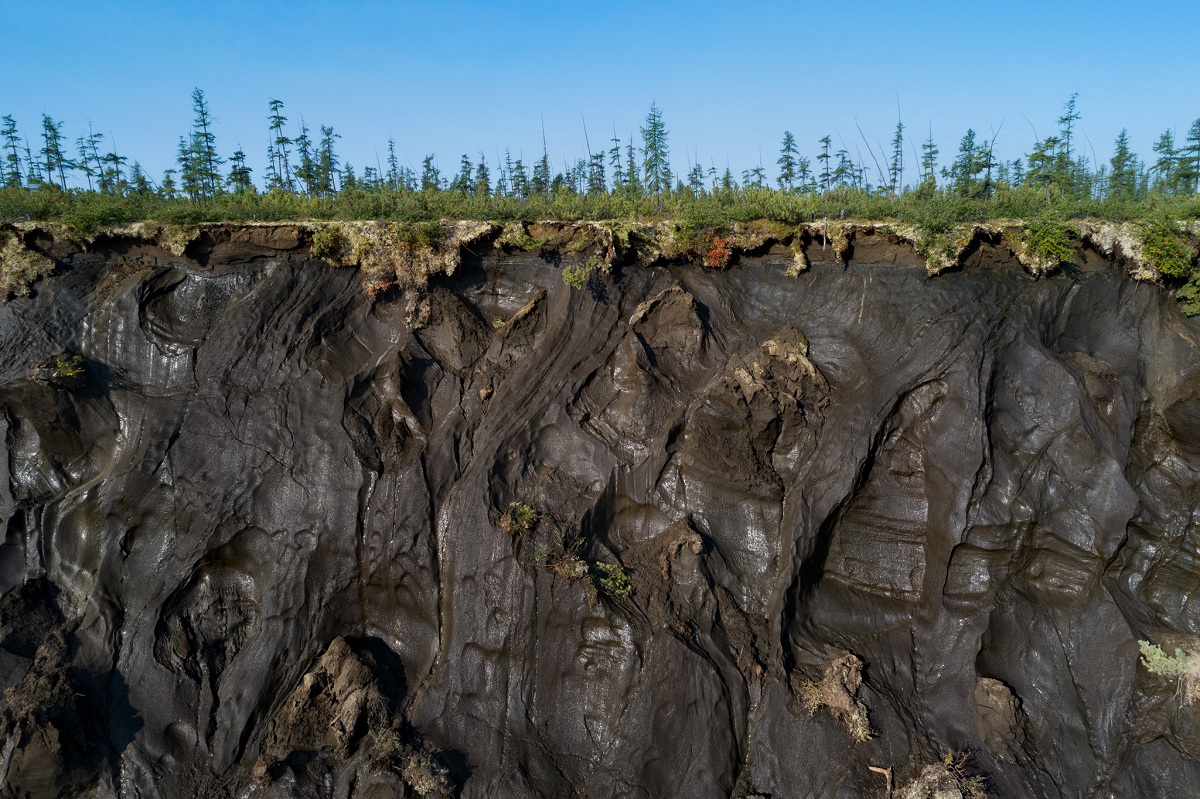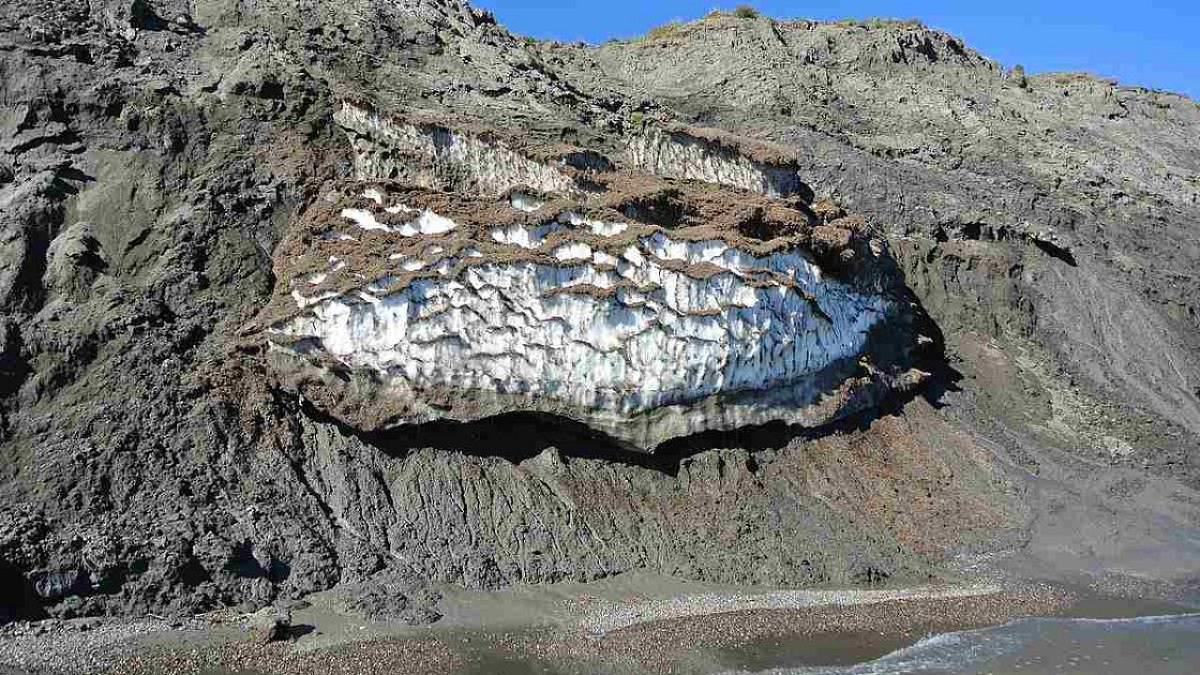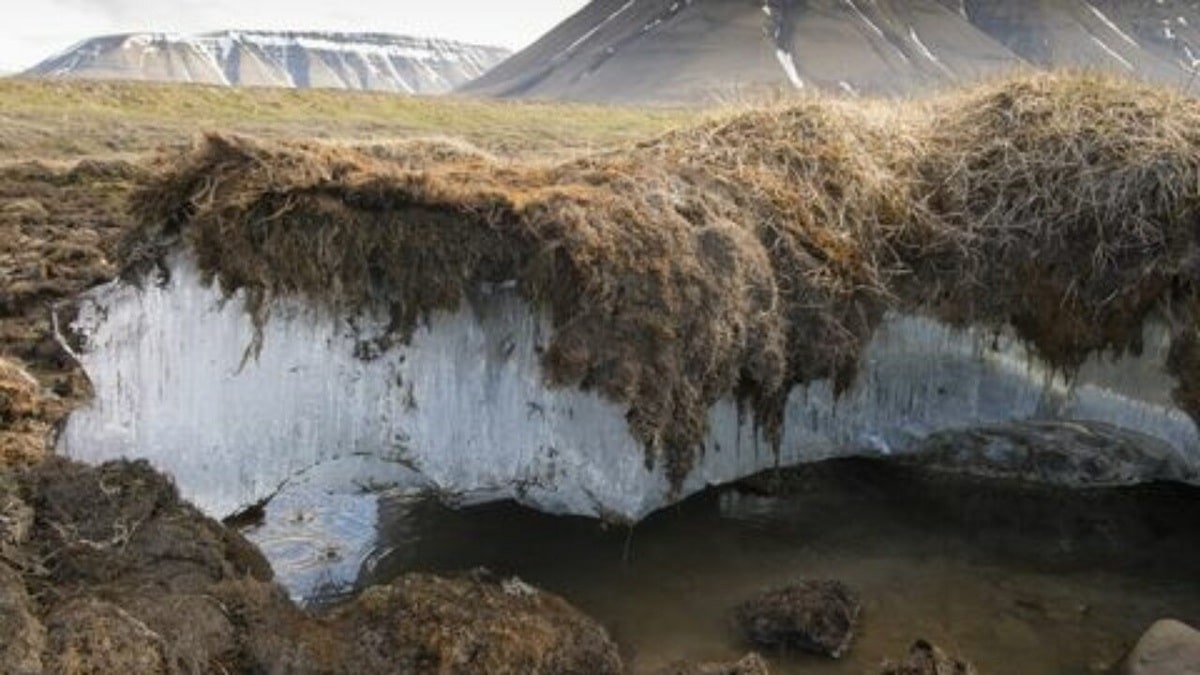
Surely you have ever heard of permafrost. It is a layer of the subsoil that is the earth's crust and that is permanently frozen due to its nature and the climate where it is found. Its name comes from this permanent freeze. Although this layer of the subsoil is permanently frozen, it is not covered with ice or snow continuously. It is found in areas with a very cold and periglacial climate.
In this article we are going to tell you about all the characteristics, formation and possible consequences of permafrost melting.
Key features

The permafrost has a geological age in addition to 15 thousand years. However, since climate change is increasing global average temperatures, this type of soil is in danger of melting. The continuous thawing of this permafrost can cause various consequences that we will see later in this article. It is one of the greatest dangers we encountered in terms of climate change in this decade.
The permafrost is divided into two layers. On the one hand, we have the pergelisol. This is the deepest layer of this soil and it is completely frozen. On the other hand, we have the molisol. Molisole is the most superficial layer and can be thawed more easily with a change in temperatures or the present environmental conditions.
We must not confuse permafrost with ice. It does not mean that it is a ground covered with ice, but that it is a frozen ground. This soil can be extremely poor in rock and sand or very rich in organic matter. That is, this soil can have a large amount of frozen water or it can contain almost no liquid.
It is found in the subsoils of almost the entire planet in colder areas. Specifically We find it in Siberia, Norway, Tibet, Canada, Alaska and islands located in the southern Atlantic Ocean. This only occupies between 20 and 24% of the earth's surface and is somewhat less than that occupied by deserts. One of the main characteristics of this soil is that life can develop on it. In this case, we see that the tundra develops on the permafrost soil.
Why is permafrost thawing dangerous?

You have to know that for thousands and thousands of years permafrost has been responsible for accumulating large reserves of organic carbon. As we know, when a living being dies, its body decomposes into organic matter. This soil absorbs organic matter having a large amount of carbon in it. This means that the permafrost has been able to accumulate around 1.85 trillion metric tons of organic carbon.
When we see that the permafrost begins to melt there is a serious problem as a result. And this process of melting ice implies that all organic carbon retained by the soil is released in the form of methane and carbon dioxide into the atmosphere. This melting is causing the increase of greenhouse gases into the atmosphere. We recall that carbon dioxide and methane are two greenhouse gases with the ability to retain heat in the atmosphere and cause an increase in average global temperatures.
There is a very useful study that is responsible for recording the increase in temperatures as a function of the change in the concentrations of these two types of greenhouse gases in the atmosphere. The main cause of this study is analyze the immediate consequence of melting permafrost ice. To know this change in temperatures, the researchers must drill the interior to extract a few samples to be able to record the amount of organic carbon present in them.
Depending on the amount of these gases, climatic variations can be recorded. With the great increase in temperatures, these soils that have been frozen for thousands of years have started to thaw at an unstoppable rate. This is a self-feeding chain. That is, the permafrost thawing causes an increase in temperatures which, in turn, will cause even more permafrost to melt. Then, get to the point where global average temperatures will rise dramatically.
Consequences of melting permafrost

As we know, climate change is ruled by an increase in global average temperatures. These average temperatures can cause changes in meteorological patterns and cause extraordinary phenomena. Dangerous phenomena such as prolonged and extreme droughts, increased frequency of floods, cyclones, hurricanes and other extraordinary phenomena.
In the scientific community it was established that an increase in the global average temperature of 2 degrees Celsius would cause the loss of 40% of the entire surface occupied by permafrost. Since the thawing of this floor causes the loss of the structure, it becomes very serious since the floor supports everything that is above and for life. The loss of this soil means losing everything that is above it. This also affects man-made buildings and the forests themselves and the entire related ecosystem.
The permafrost found in southern Alaska and southern Siberia are already thawing. This makes this whole part more vulnerable. There are parts of the permafrost that are cooler and more stable in the higher latitudes of Alaska and Siberia. These areas appear to be somewhat better protected from extreme climate change. Drastic changes were expected in the next 200 years, but as the temperature is rising they are seeing each other ahead of time
Rising temperatures from Arctic air are causing permafrost to thaw faster and all organic material to decompose and release all of its carbon into the atmosphere in the form of greenhouse gases.
I hope this information can learn more about permafrost and the consequence of its melting.